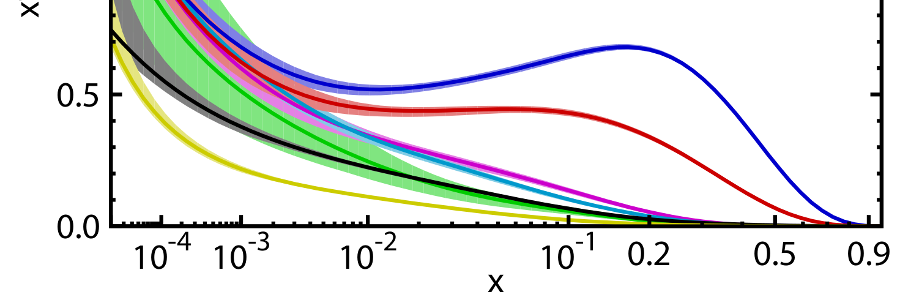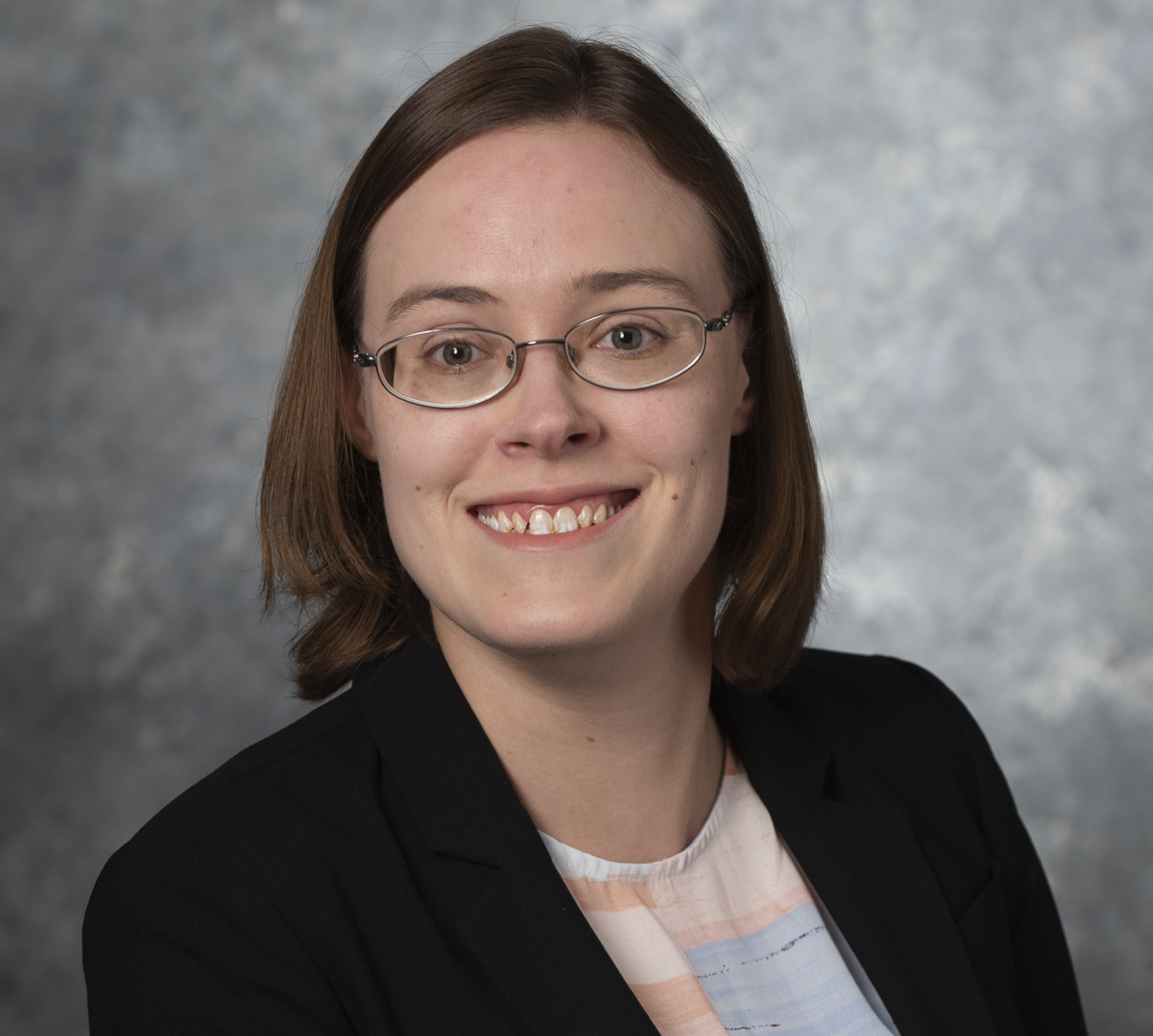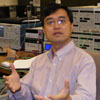Research in Physics
The SMU Department of Physics is concentrated in experimental and theoretical particle and astrophysics, which includes efforts to understand the universe at its smallest and largest scales. You will find a description of our diverse research topics and expertise on this page. Continue reading below to learn more!
When Matter Collides
Our department is home to both experimental and theoretical efforts to understand the structure of matter, the nature of the laws that govern that structure, and the search for new constituents of the universe. Our primary experimental tool is the Large Hadron Collider and our primary instrument is the ATLAS Experiment, both of which are located at the CERN Laboratory in Geneva, Switzerland. Our experimental research takes place both at SMU, thanks to a massive worldwide computing grid and SMU's high performance computing, and at CERN, where graduate students and postdoctoral fellows are often stationed. Our primary theoretical tools are advanced mathematical and computational frameworks that describe and predict some of the hardest-to-calculate structures inside the heart of matter like protons and neutrons. We are highly active members of the The Coordinated Theoretical-Experimental Project on QCD (CTEQ) Collaboration. Experimental and Theoretical efforts benefit from the immense investment in computation made by SMU in the last decade, and continuing into the future.
Using proton collisions at 13 TeV, we hunt for evidence of new particles or unexpected properties in known particles. We contributed to the discovery of the Higgs particle in 2012 and continue to unlock its secrets in our active and ongoing program. We are also involved in development of technology to support this and future phases of the detector, particularly in the areas of trigger and calorimeter subsystems. Our primary theoretical tools are the mathematical ideas that describe and predict the structure of matter like the proton. The interior of such particles have structure whose exact details are crucial to the understanding of data from the Large Hadron Collider and future experiments. Together, these twin experimental and theoretical approaches are needed to fully map out the nature of matter and forces that shape our universe.
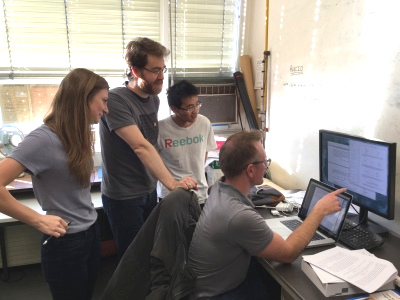
PhD students at CERN engage in a discussion about modelling data from the LHC. Jeff Hetherly (seated) currently works at Google Brain.
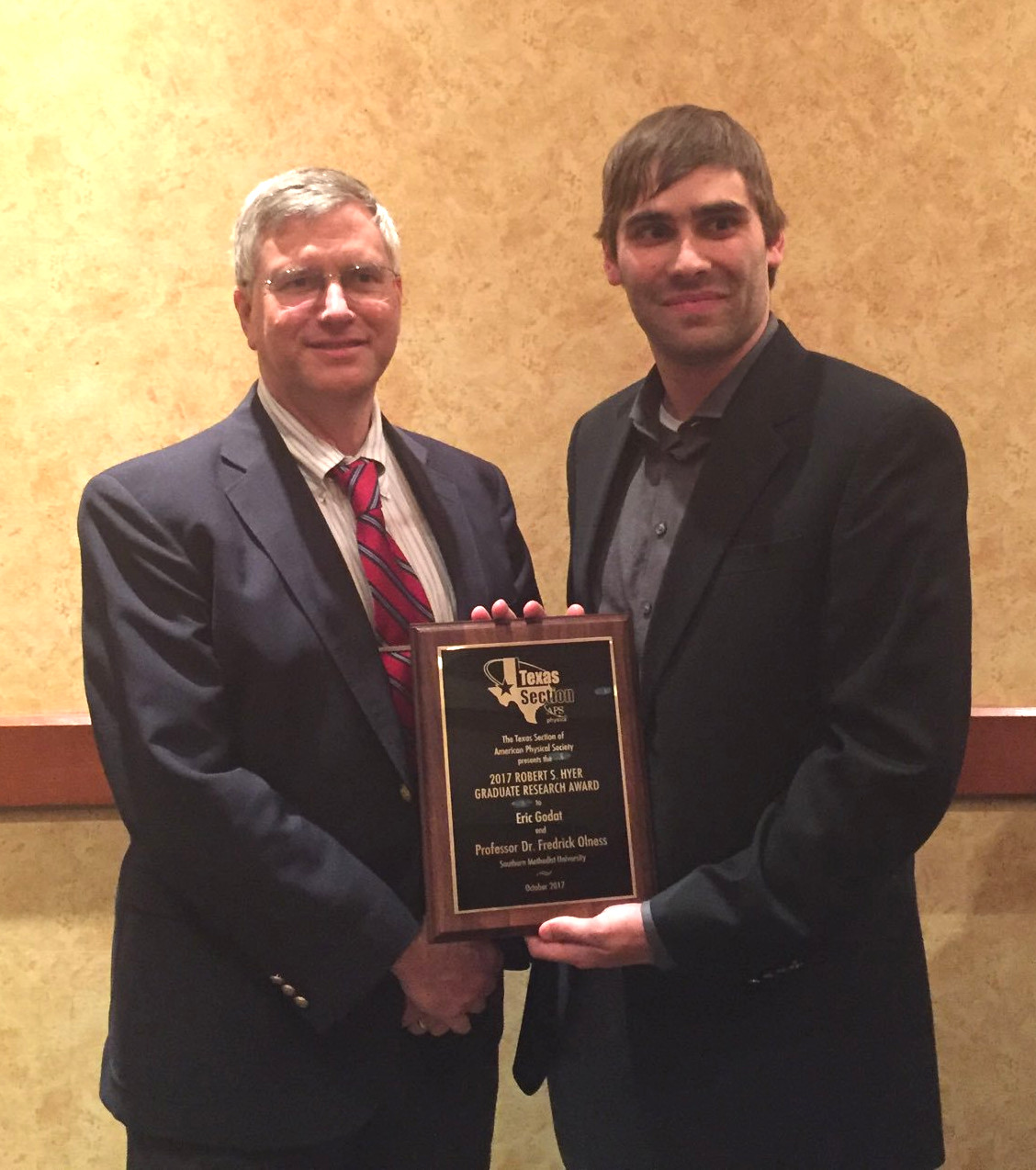
PhD student Eric Godat (right) accepts the Texas Section of the American Physical Society Robert S. Hyer award for excellence in graduate research for his work on the structure of heavy nuclei in particle collisions. Eric is now a Data Science Research Applications Developer at SMU.
Undergraduate physics major Santosh Adikari had an incredible journey into academic research, and pursued theoretical physics research while at SMU. He is now a PhD candidate in the Biophysics program at the University of Minnesota.

Our research faculty are nationally and internationally known. Here, Prof. Pavel Nadolsky explains recent work during a meeting at the Deutsches Elektronen-Synchrotron (DESY) Laboratory in Hamburg, Germany.
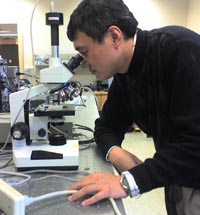
Prof. Jingbo Ye inspects a prototype high-speed electronic component intended for use in the upgrade of the ATLAS Experiment. The SMU Opto-Electronics Laboratory is a premiere facility for the development of cutting-edge data-transmission technology.
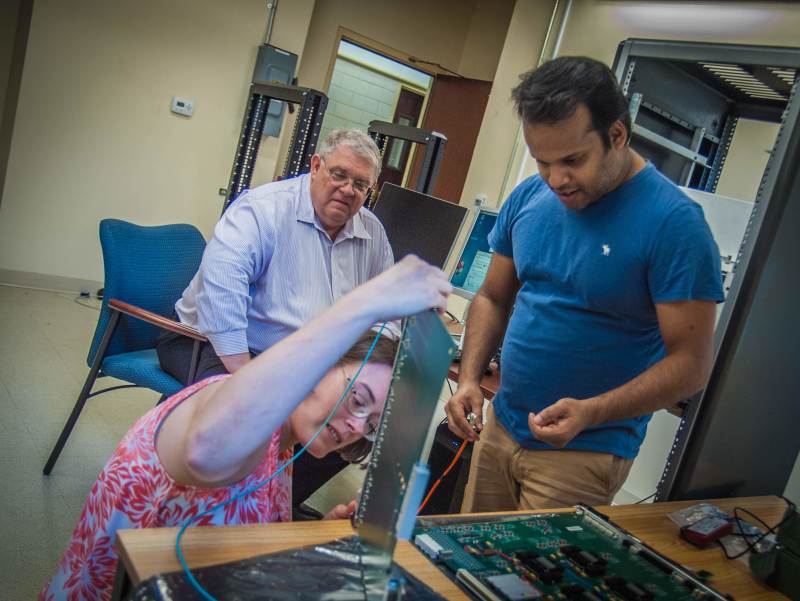
Prof. Allison Deiana inspects a firmware testing board along with Engineer Lloyd Hasley and Post-Doctoral Researcher Rohin Narayan in her Firmware Laboratory at SMU.
Faculty Engaged in Research
A Hand that Shapes Universes
Our understanding of the universe has a problem: the matter that we can see using light is not enough to explain the structure of the cosmos. Galaxies seem to rotate too fast; matter seems to clump too tightly. When one measures the mass of a galaxy, it's greater than the sum of its light-sensitive matter. There appears to be dark matter, something the neither interacts with nor emits light. But what is dark matter made from? SMU is an active and leading contributor to the SuperCDMS Experiment located at the SNOLab in Sudbury, Canada. This sensitive detector, located in a mine deep underground, is kept extremely cold and free from radioactive contamination. It sits, and it listens... for the passage of dark matter through its germanium crystals. This experimental program is actively engaged in the search for the contituents of dark matter... whatever they may be.
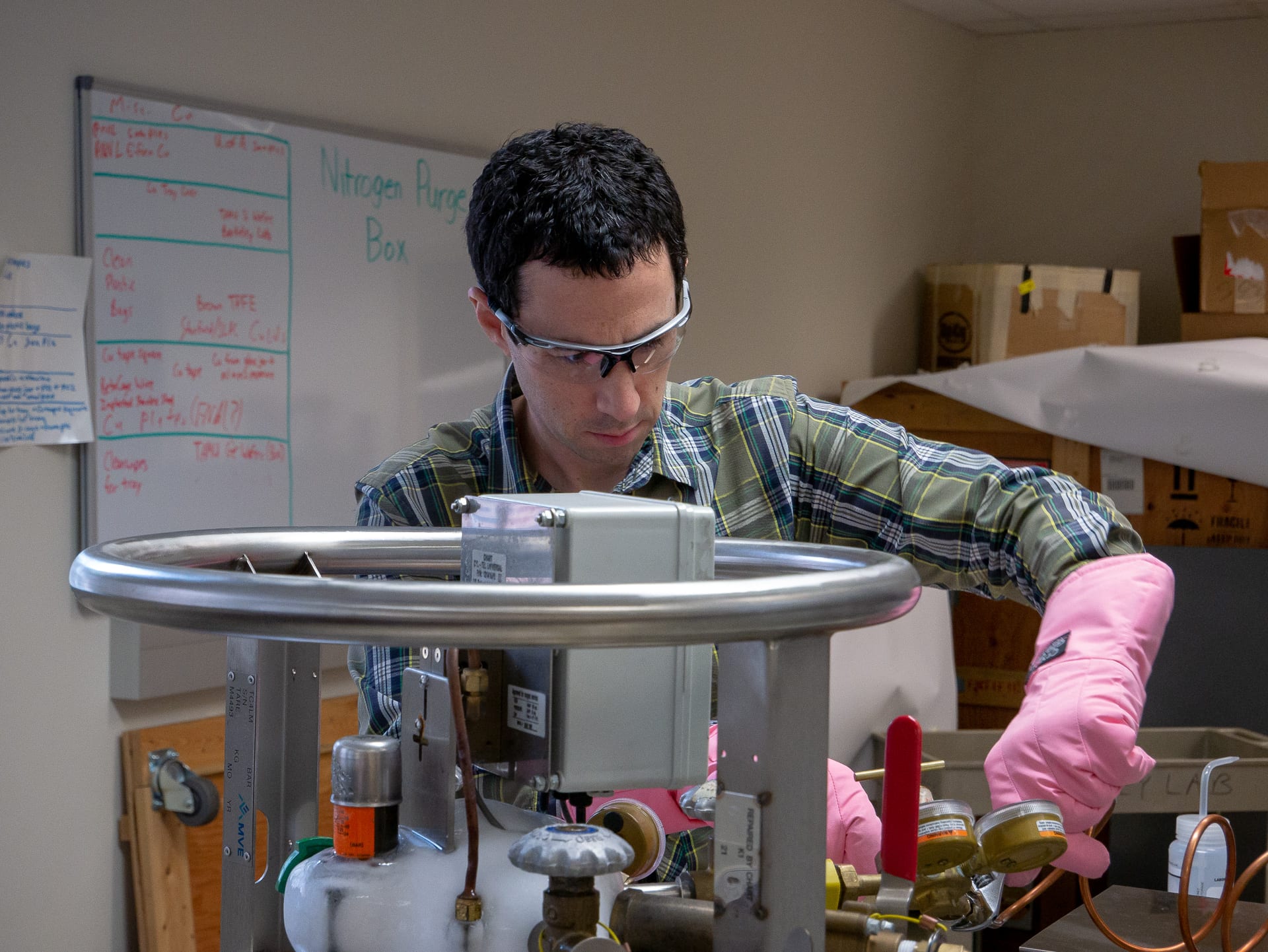
PhD student Matt Stein works on the cryogens in the LUMINA Lab at SMU. Matt is now a System Engineer at RT Logic in Colorado.
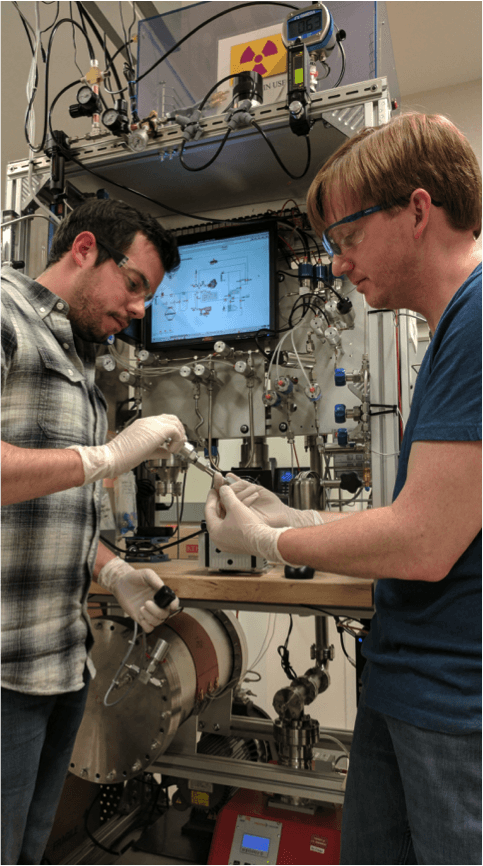
PhD student Dan Jardin (left) works on instrumentation with scientist Ray Bunker at the Pacific Northwest National Laboratory. Dan's work was a key part of his prestigious Department of Energy Graduate Research Fellowship.
Take a tour of the LUMINA Lab at SMU with Prof. Jodi Cooley and physics major and SMU Hamilton Research Scholar Mayisha Nakib. Mayisha is now in the PhD program at University of Illinois.
Faculty Engaged in Research

[More Info]
The Fingerprints of the Beginning of Time
380,000 years after the beginning of time, the universe became transparent to light; that light streamed through the universe, imprinted with its last interactions with matter. The early universe has left indelible fingerprints on that light. Today, that light known as the Cosmic Microwave Background (CMB) can only be seen with the aid of special instruments. The theoretical cosmology group at SMU works to understand the structure of the universe, then and now, and the CMB is a key ingredient in modeling the composition of the cosmos. At SMU, we are working to find ways to best utilize the data acquired from cosmological observations in order to maximize the impact of cosmological experiments on fundamental physics. Near-future observations of the CMB and large-scale structure will achieve the sensitivity required to reach several important theoretical thresholds related to a variety of key subjects: light relics, neutrinos, and cosmic inflation. Prof. Joel Meyers, who leads this effort, is a member of several collaborations for upcoming CMB experiments, including Simons Observatory, CCAT-prime, CMB-S4, and PICO.
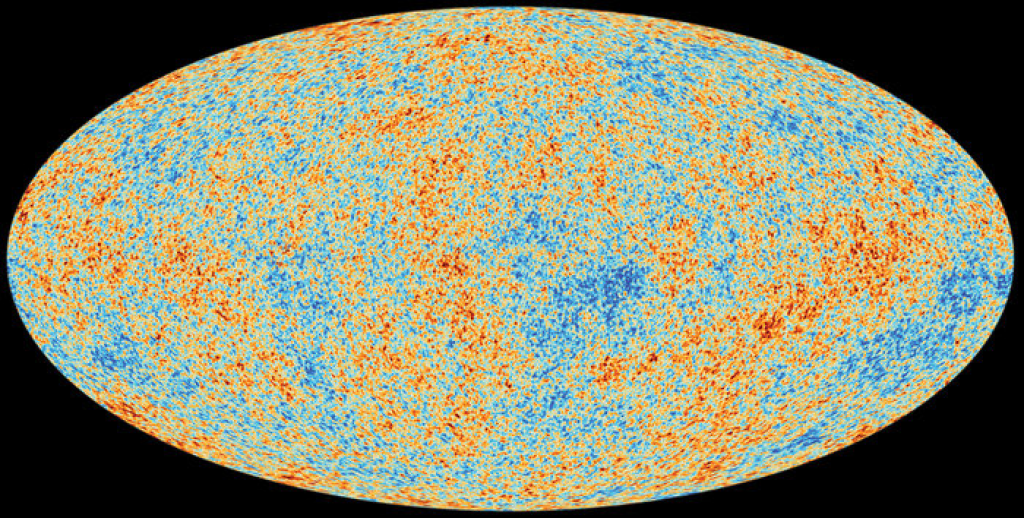
This image of the CMB light, taken by the Planck Satellite, contains the fingerprints of the matter and forces at work in the very early universe.
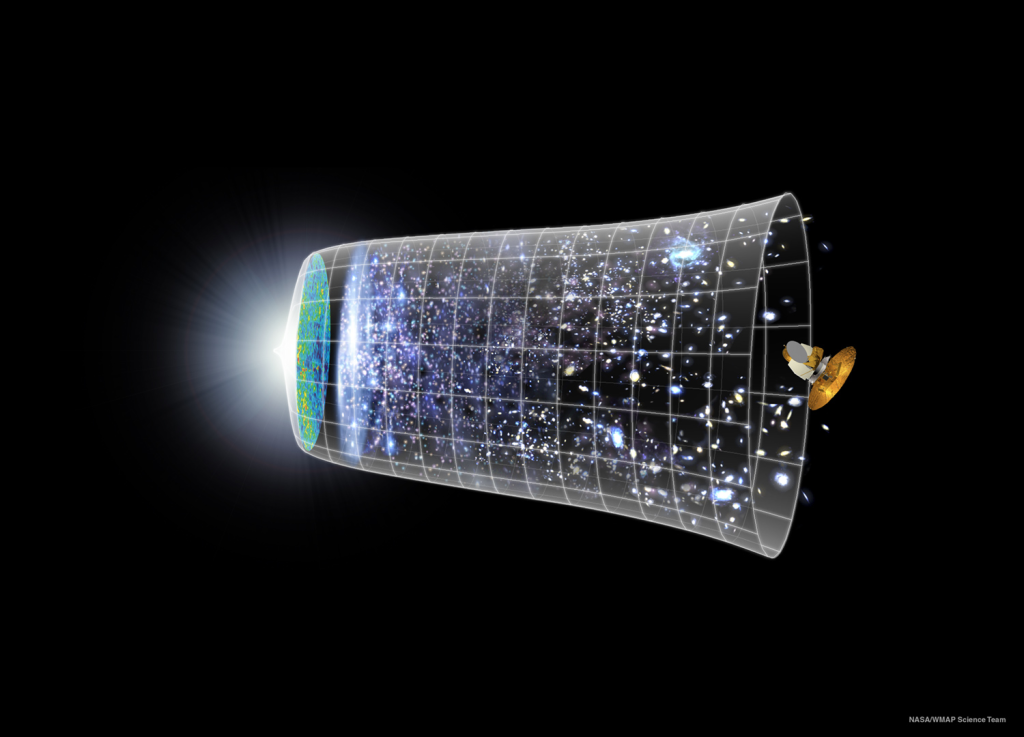
One of many observations available from astronomy, the CMB helps us understand the history of the cosmos - from a time near its birth to a period of accelerating expansion in which we now live. Credit: NASA/WMAP
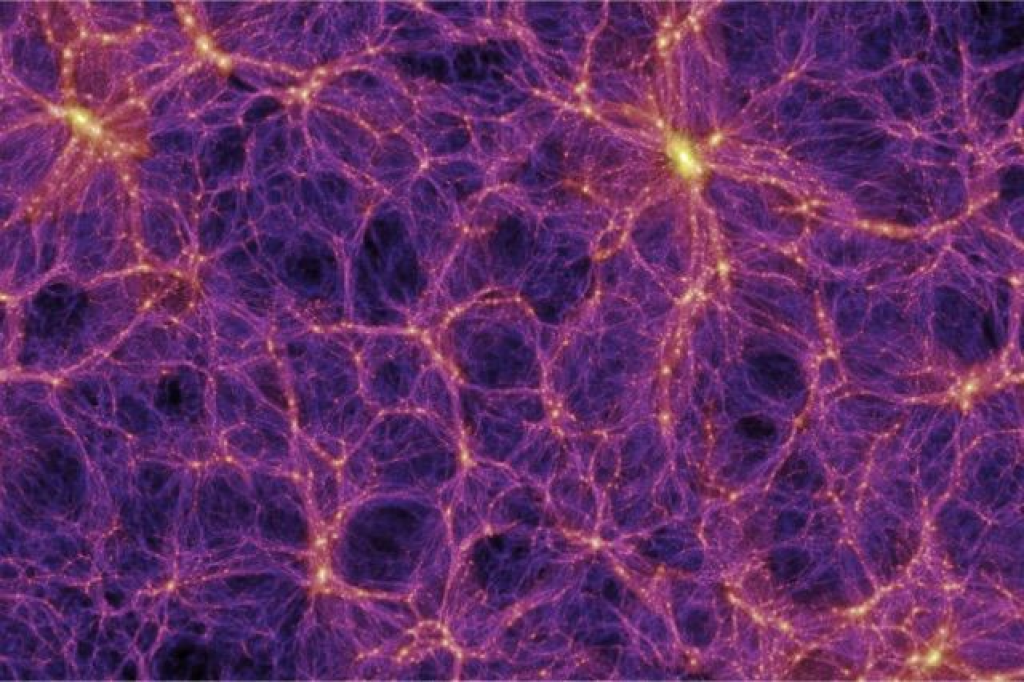
Here we see the effect that dark matter - present in the early universe and still extant - had in shaping the largest structures in the universe. These tendrils are vast in scale, places now where huge numbers of galaxies have been seeded. Credit: Millennium Simulation.
Faculty Engaged in Research
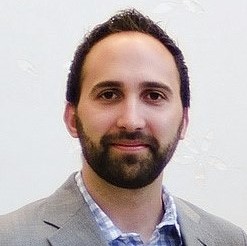
[More Info]
The Black Holes at the Hearts of Galaxies
Lurking at the heart of almost every galaxy, including our own Milky Way, is a giant supermassive black hole. The black hole in our galaxy, and in most others, is quiet and almost invisible. However, in some 10% of galaxies, the central supermassive black hole is ravenously consuming matter and emitting a colossal amount of energy, often outshining all of the stars in the host galaxy combined. As matter falls into the black hole it forms a viscous, turbulent, magnetic structure known as the accretion disk – a sensitive probe of high energy astrophysics and general relativistic effects unreachable with Earth-based laboratories. We call such accreting supermassive black holes Active Galactic Nuclei (AGN). Of course, the galaxies hosting such powerful objects cannot ignore them: vast amounts of energy are injected into the gas and dust by energetic outflows from the AGN, with dramatic implications for star formation and evolution of the galaxy. At SMU, Prof. Krista Lynne Smith utilizes the multiwavelength capabilities of radio telescope arrays, ground-based optical observatories, and space-based X-ray telescopes alongside the high-precision timing abilities of exoplanet-hunting satellites like Kepler and TESS (Transiting Exoplanet Survey Satellite) to study the behavior of accreting matter, the high-energy processes within relativistic jets, and the impact of AGN on galaxy evolution.
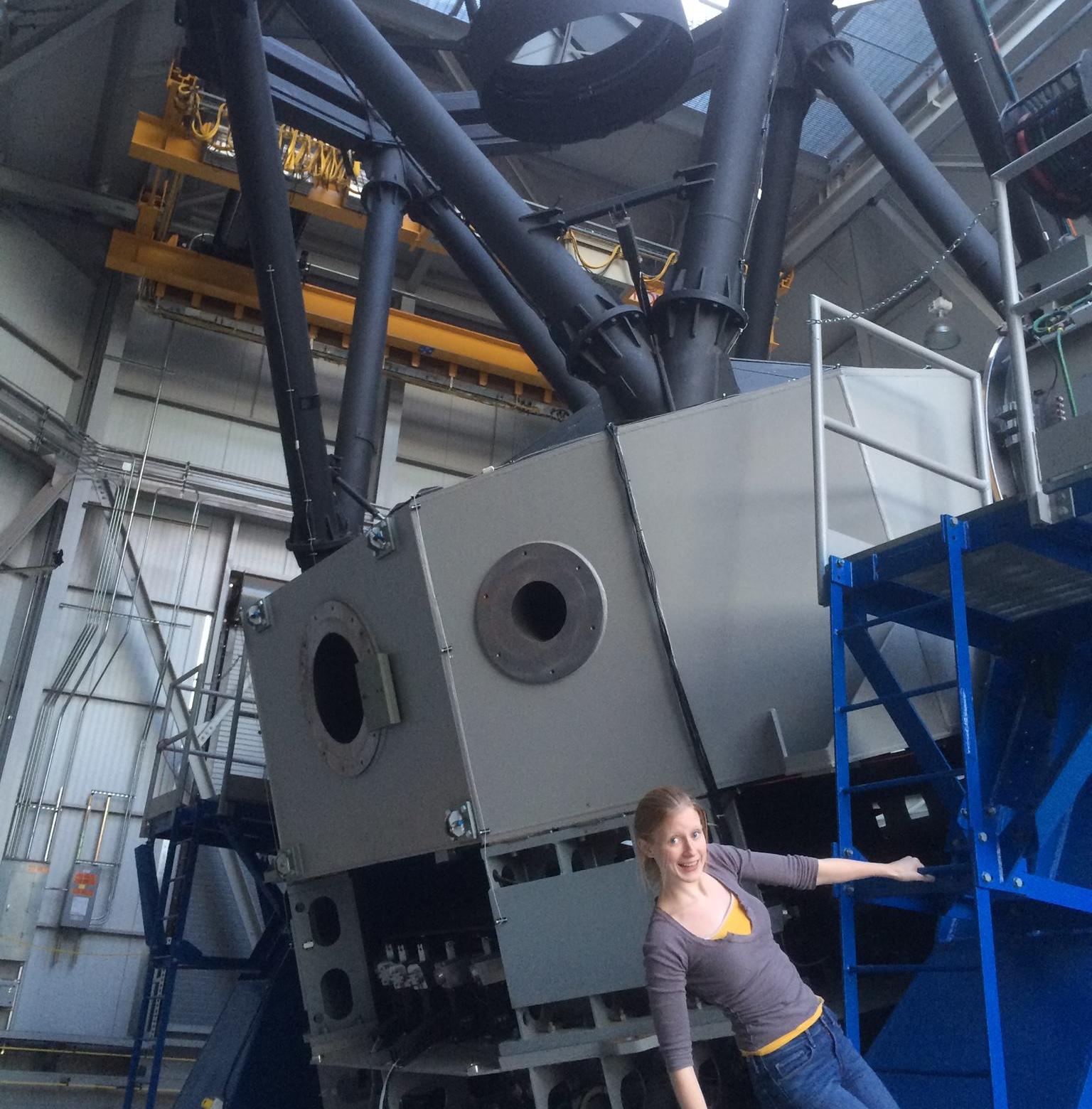
Prof. Krista Smith at the 4.3m Discovery Channel Telescope at Lowell Observatory, where the optical spectra for measuring black hole masses were obtained.
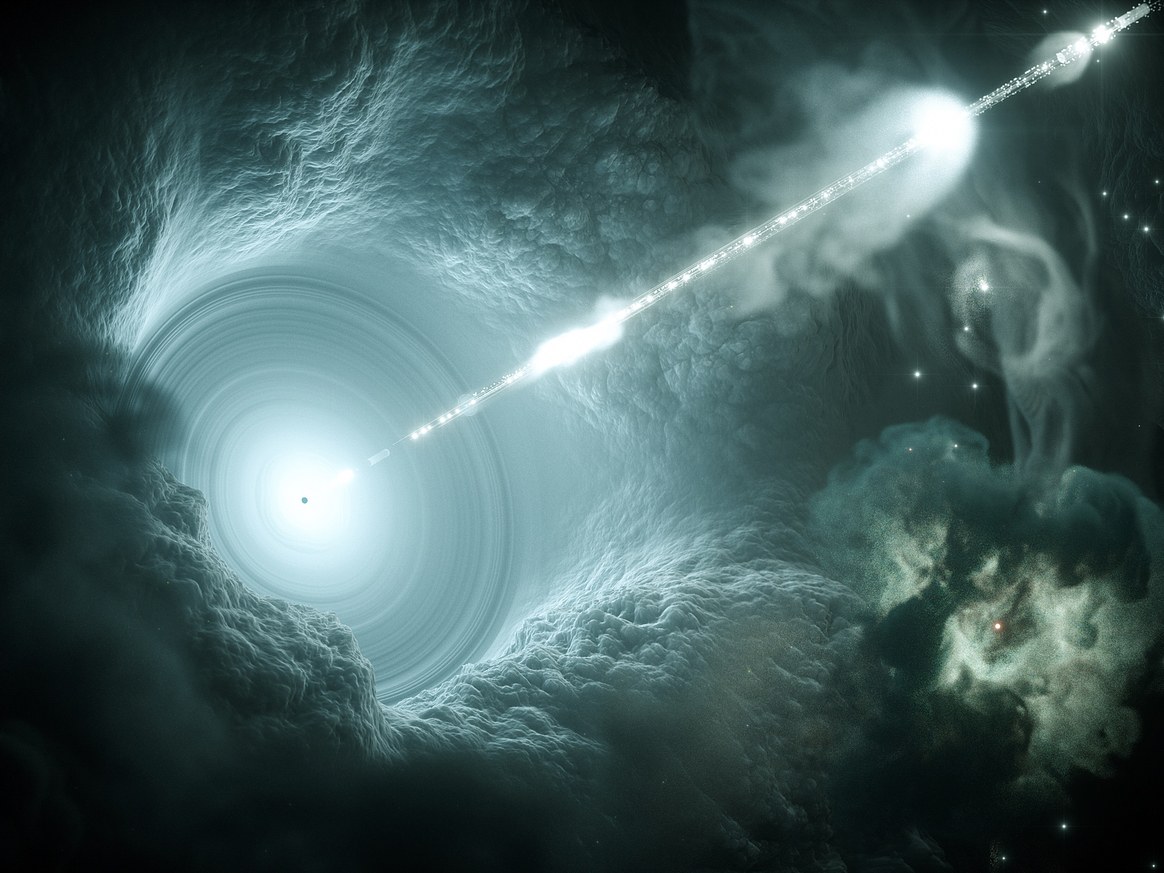
A beautiful artist's conception of the dusty torus and accretion disk surrounding an accreting black hole launching relativistic jets. (Image credit: DESY / Science Communication Lab)
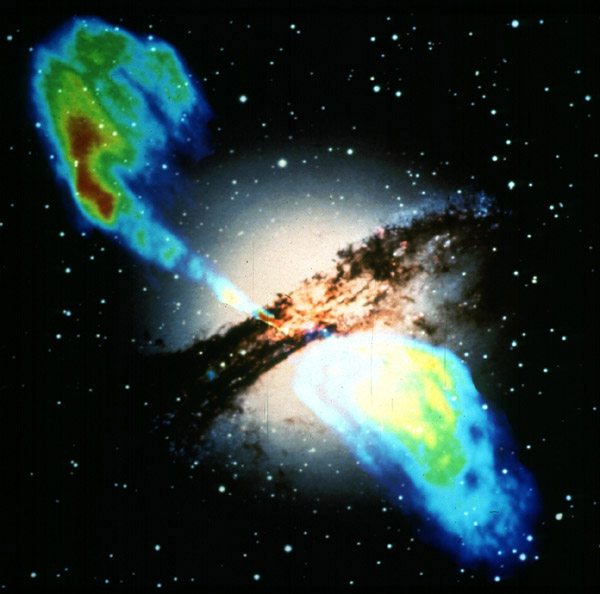
The galaxy Centaurus A, in which a huge AGN-driven jet is bursting out of the host galaxy. The bright colors show the jet imaged in radio emission; the galaxy and its prominent dust lane are shown in optical.
Faculty Engaged in Research
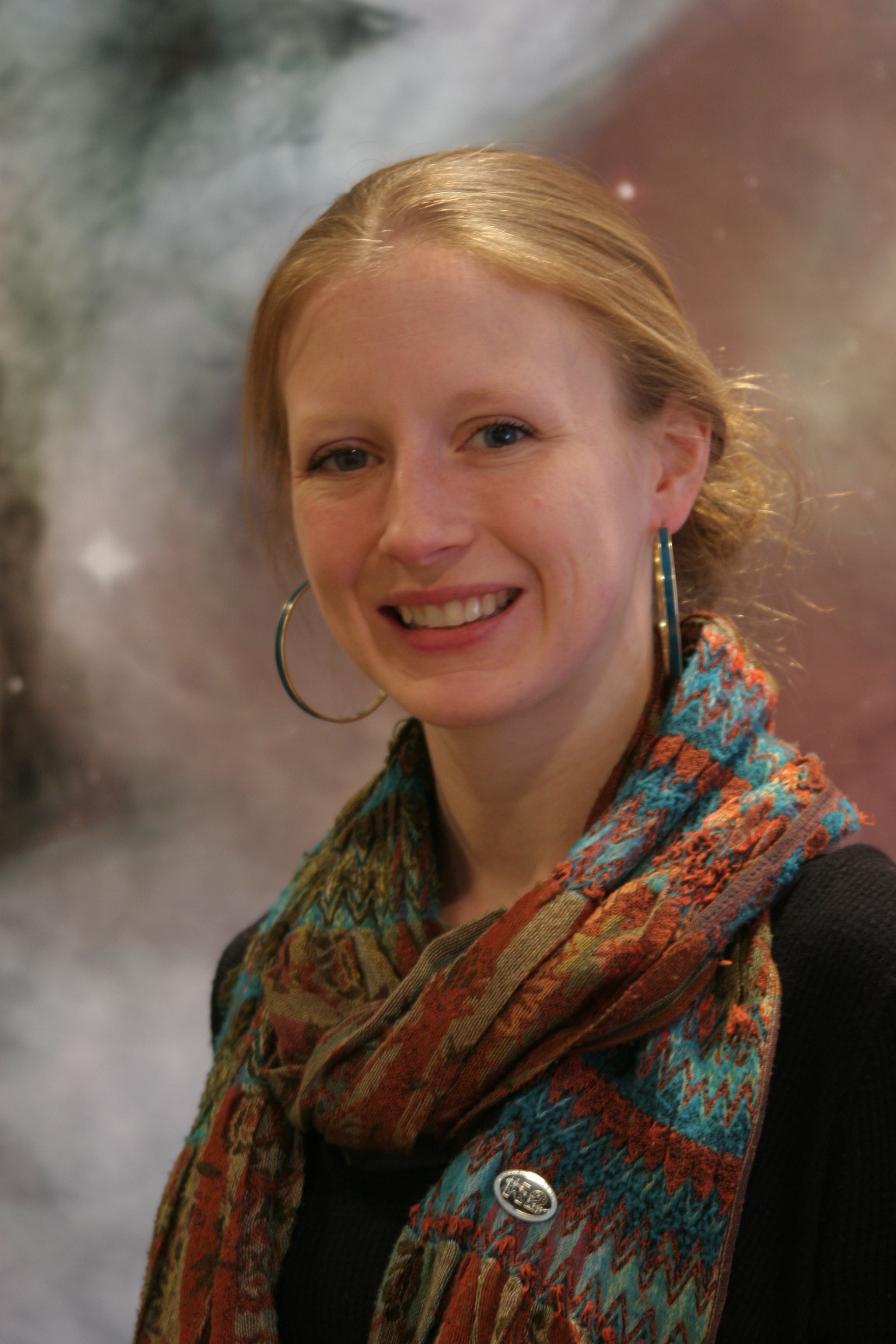
[More Info]
Learn More...
- The TESS Satellite - hunting for exoplanets
- The KEPLER/K2 mission
- Dr. Smith writes about her research
- An invited talk Dr. Smith delivered at a Kepler/K2 science conference
The Lives and Deaths of Stars
The Big Bang kicked off the universe, but our understanding of the history of the universe since then is driven by our ability to measure distance and time. We rely on "cosmic candles" - well-characterized astrophysical phenomena - to light the way back all the way to the first stars and galaxies. Careful astronomy and astrophysics over centuries has yielded the ability to classify objects for use in such cosmic distance measurements. These, in turn, become the meter sticks that give us information about the history of the universe - how big it is, how it expanded to that size, and how it continues to expand today. At SMU, we use the telescopes, and features of the life cycles of stars, to grow the list of objects in the night sky while also using them to understand more about the universe. The ROTSE project utilizes fast, robotic telescopes to discover and study rapidly changing celestial phenomena, including supernovae and gamma-ray bursts. The Dark Energy Spectroscopic Instrument, or DESI, is a next-generation galaxy survey that utilizes a massive array of robotically controlled optical fibers to study the evolution of the large scale structure of the universe.
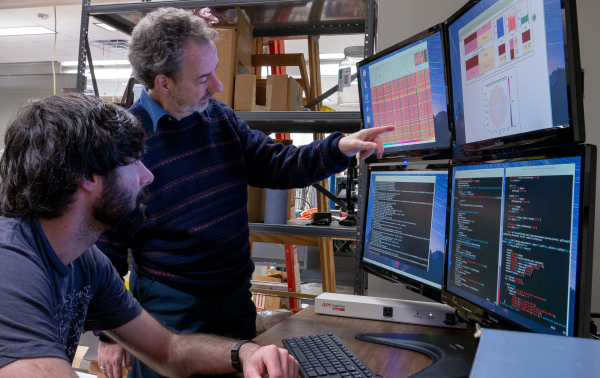
Students engage in major projects, such as the Dark Energy Spectroscopic Survey, as well as smaller collaborations like the ROTSE program.
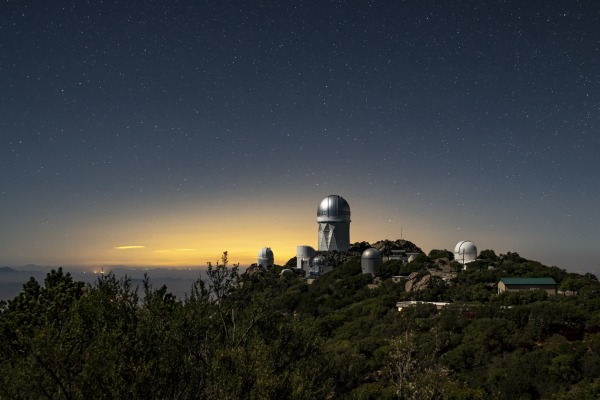
The Mayall 4-Meter Telescope, which will be home to the Dark Energy Spectroscopic Instrument (DESI), seen at night at Kitt Peak National Observatory on Monday, May 21, 2018 in Tucson, Arizona. Photo © 2018 The Regents of the University of California, Lawrence Berkeley National Laboratory.
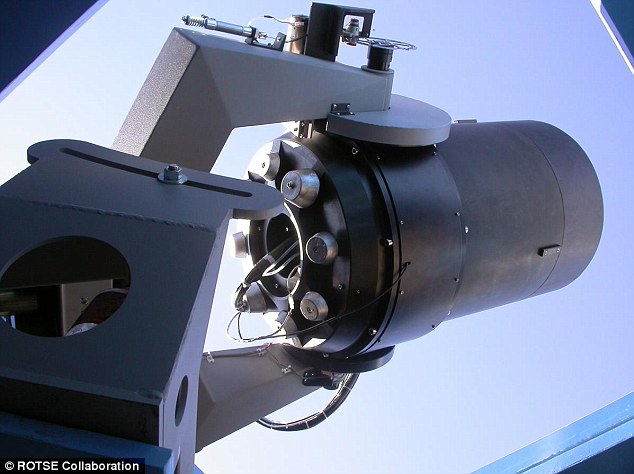
SMU's ROTSE IIIb at the McDonald Observatory, Fort Davis. The telescope is part of the Robotic Optical Transient Search Experiment, which has telescopes in four locations on Earth to cover the entire sky in search of gamma-ray bursts. Credit: ROTSE Collaboration.
Faculty Engaged in Research

[More Info]
Learn More...
Into the Heart of the Ghost Particle
Neutrinos are everywhere. They pour from the Sun. They're emitted in radioactive decay here on earth. They shower down on us as cosmic rays slam into the atmosphere. They are cast out from the hearts of dying stars and the feeding frenzies of supermassive black holes at the centers of every galaxy in the universe. They are ghost particles, able to pass through a light-year length of Lead and barely suffer a collision with an atom. SMU is involved in a massive international effort to make beams of neutrinos, using facilities at the Fermi National Accelerator Laboratory, and study those beams using huge detectors. NOvA and DUNE are the present and future of this field in the U.S., and SMU is a part of their mission to measure all of the properties of the neutrino and to see if we can learn what they might teach us about the greatest mysteries of the cosmos. Do we truly know the origin on all fundamental mass in the universe? Do we understand the differences between matter and anti-matter that might help explain why the universe is so abundant in the former, and depleted of the latter?
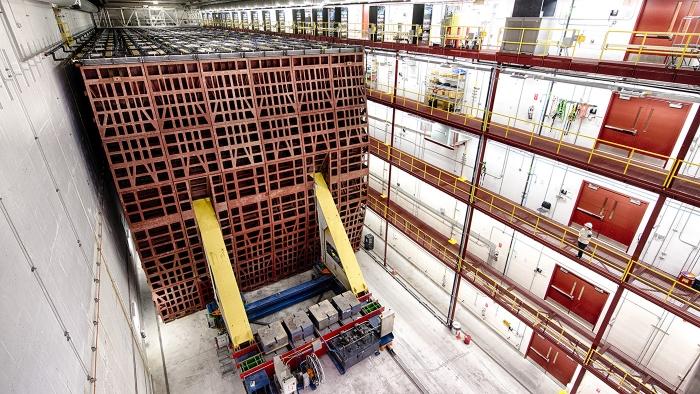
The NOvA neutrino detector in northern Minnesota is 200 feet long and 50 feet square (see the little people at the right side of the image for scale). (Credit: Reidar Hahn, Fermilab)
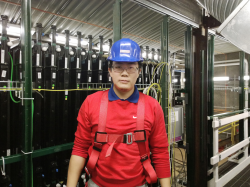
PhD student Biao Wang earned his advanced degree trying to measure the magnetic moment of the neutrino, which if observed could be a strong guidepost toward a more complete description of all the forces and particles in nature. After graduating, he accepted a post-doctoral research position at the University of Alabama.
Faculty Engaged in Research
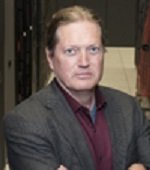
[More Info]
A Universe from the Ground-Up
The universe cries for explanation. Mathematics provides the language to describe it, and physics provides the means to understand it. At SMU, our theoretical physics efforts have been aimed at understanding the universe from the ground up, in addition to using data to formulate new models that might lead to new theories. Roberto Vega has interests and activities spanning many ideas, including Supersymmetry (SUSY) and non-SUSY-based formalisms. More recently Vega has been involved in the study of Effective Lagrangians, more generalized tools for building model-independent parametrizations of physics beyond the Standard Model. These efforts have been widely applied to the physics of the Higgs particle and that of the neutrino.
At SMU, we're looking to see how to build a universe from fundamental principles, to better understand the reasons for what we see in particle collider and astrophysical data.
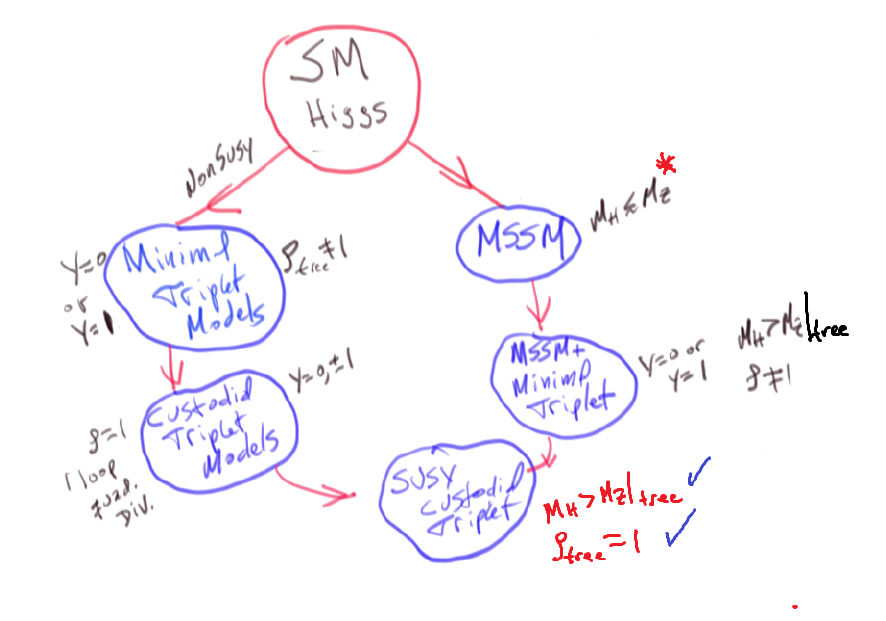
The discovery of the Higgs particle delivered us into a new era, where new theoretical tools are needed to explain the universe. The Higgs particle is not the end of the story; it's the beginning of an even more difficult chapter in science, for if the Higgs particle is as expected then much is unclear about how the universe came to be.
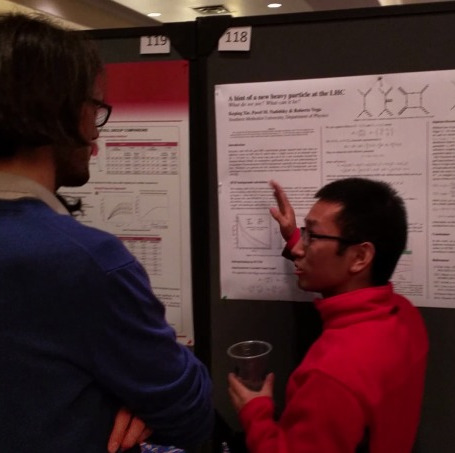
Students engage in exploration of the mathematics that might describe our universe while predicting new phenomena that can be observed at experiments. PhD candidate Keping Xie did just this, and went on to a post-doctoral position at the University of Pittsburgh continuing his work on theoretical physics.
Faculty Engaged in Research

[More Info]
How to Train a Physicist
What is the most effective way to teach science? Answering this question itself requires a scientific approach and physicists have often taken the lead. Over the past 30 years, a great deal of progress has been made with the introduction of new teaching strategies like peer instruction, just-in-time teaching, cooperative problem solving, and modeling instruction which emerged from physics education research. Members of the department currently have interests in the effectiveness of science fairs - that is school science research projects - in teaching students about the nature of science early in their careers. We also use our own courses at SMU to experiment with new teaching strategies, collect, analyze, and publish data on the outcomes, collaborating with other SMU science departments and organizations like UT Southwestern Medical Center, the American Modeling Teachers Association, and QuarkNet. We have often engaged Ph.D. students in this effort, where they have led activities such as the development of software for laboratory instruction courses and spearheaded new course development, as in our Honors Physics class.
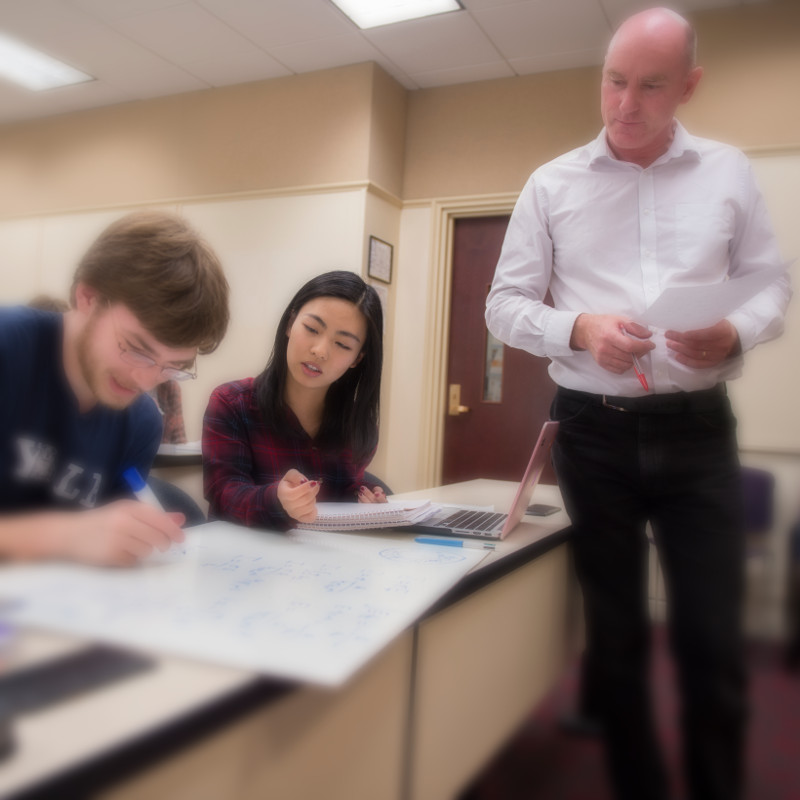
Physics education research over decades is clear: effective transfer of information is best achieved when students are responsible for grappling with the material. We investigate ways to implement that process into classroom activities.
Students in our Honors Physics class engage in construction of a cloud chamber using (mostly) household materials. There is little to no lecturing in this setting; students work in teams with supervision from instructors to build and operate, and learn by hands-on approaches. This approach to learning is in accordance with physics education research findings.
Faculty Engaged in Research
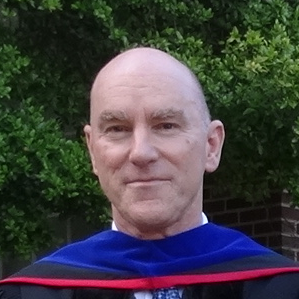
[More Info]
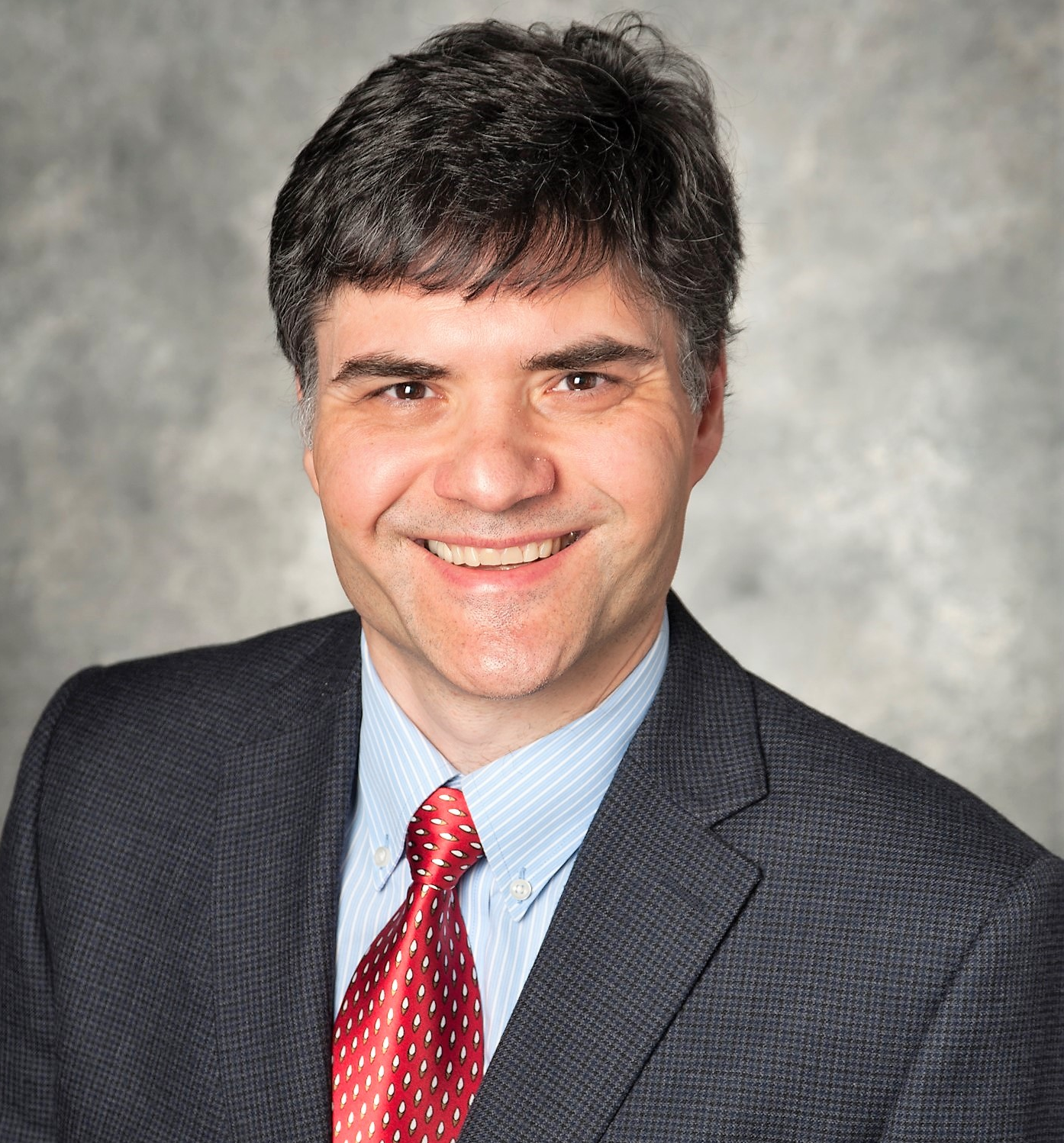
[More Info]
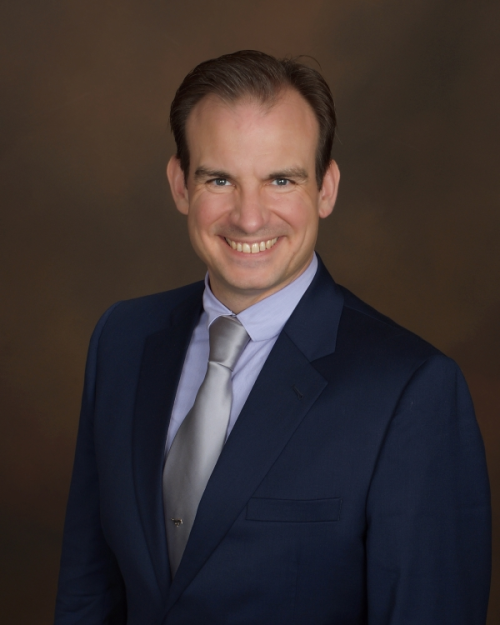
[More Info]
Learn More...
- High school science fair and research integrity, publshed in PLOS|ONE and co-authored by Simon Dalley.
- (SMU-HEP-19-10) SMU Honors Physics: A Teaching Manual by Jodi Cooley, Eric Godat, and Steve Sekula
- (SMU-HEP-19-07) SMU Introductory Physics: A Teaching Manual by Steve Sekula

